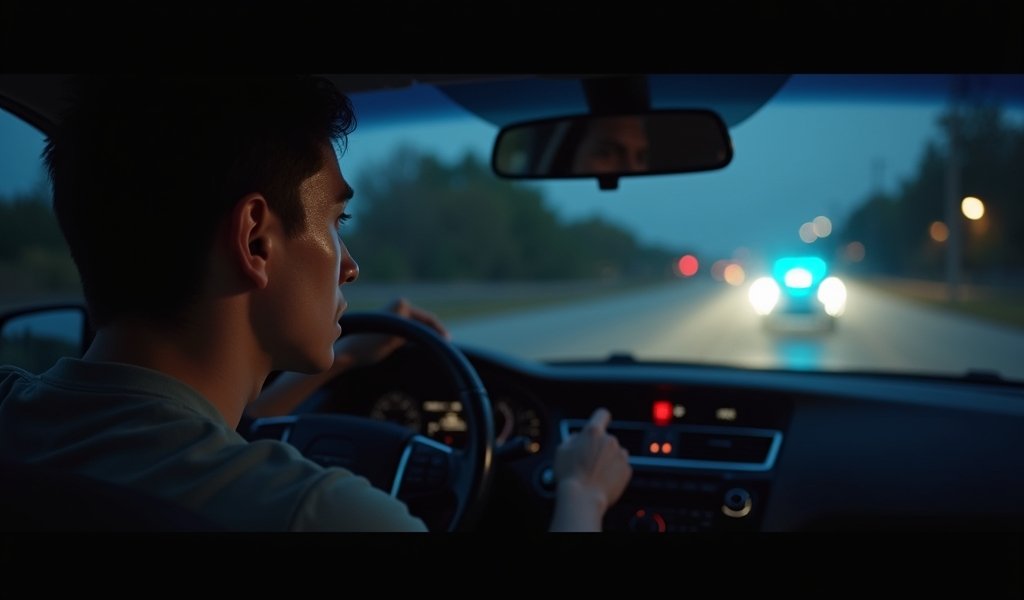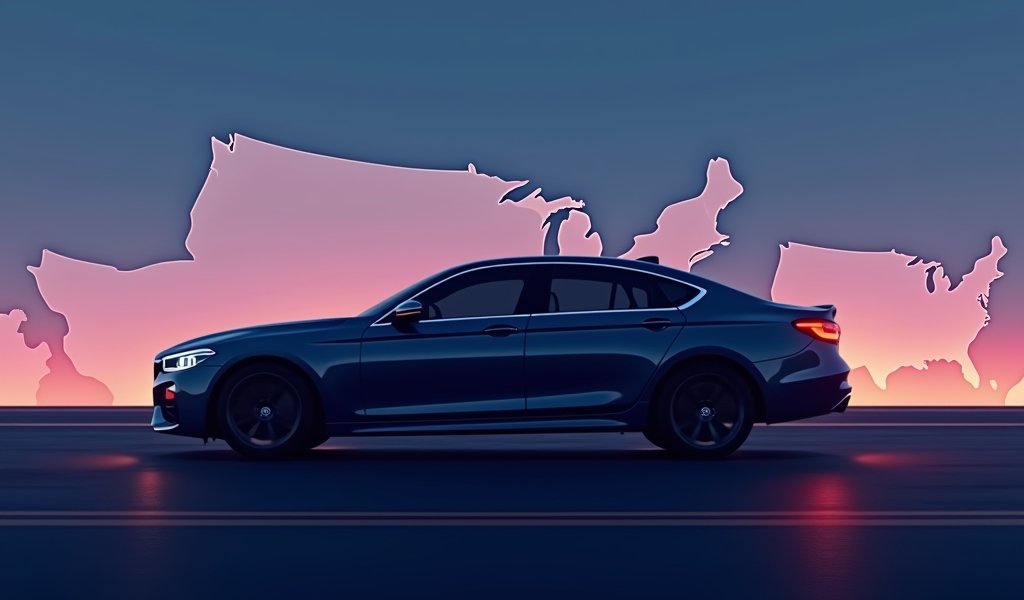Overview
This article provides a detailed guide to window tinting laws across different U.S. regions in 2024, explaining how tinting is measured (VLT percentages), regional variations in regulations, penalties for non-compliance, and medical exemptions. It emphasizes that while window tinting offers benefits like UV protection and temperature control, drivers must navigate varying state requirements to avoid fines, with the article offering practical compliance tips and noting recent regulatory changes.
Table of Contents
- Understanding Window Tinting Laws
- Why Window Tinting Laws Matter
- How Window Tinting is Measured
- Regional Breakdown of Tinting Laws
- Penalties for Non-Compliance
- Medical Exemptions
- Tips for Staying Compliant
- Notable Changes in 2024
- Conclusion
- Frequently Asked Questions
Understanding Window Tinting Laws
Let’s face it – window tinting isn’t just about giving your ride that sleek, mysterious look. During those scorching summer days when the sun turns your car into a rolling oven, proper window tinting can be a genuine lifesaver. It blocks harmful UV rays, keeps interior temperatures manageable, reduces glare, and yes – provides a bit of privacy too.
But here’s the catch: window tinting laws vary dramatically from state to state, creating a patchwork of regulations that can leave even the most conscientious car owners scratching their heads. What’s perfectly legal in Arizona might earn you a ticket in New York.
As a mechanic who’s installed countless window tints over the years, I’ve seen too many folks waste money on non-compliant tints that they’ve later had to remove. That’s why I’ve put together this comprehensive guide for 2024 – to help you navigate these waters without running aground.
Why Window Tinting Laws Matter
You might wonder why states bother regulating something as seemingly harmless as how dark your car windows can be. It’s not just bureaucratic overreach – there are legitimate safety concerns at play.
Law enforcement officers need visibility into vehicles during traffic stops. When windows are excessively dark, officers can’t see potential threats inside the vehicle, creating dangerous situations for everyone involved. It’s a safety issue first and foremost.
Your own visibility as a driver matters tremendously too. Very dark tints might look cool, but they can significantly reduce your ability to spot hazards, especially at night or in poor weather conditions. When you can’t clearly see that motorcyclist in your blind spot or the pedestrian crossing at dusk, serious accidents become more likely.
Different states strike different balances between these safety concerns and the benefits of window tinting. States with intense sun exposure like Arizona and Texas typically allow darker tints than those in the Northeast, reflecting different regional priorities and conditions.

How Window Tinting is Measured
Before diving into specific state regulations, you need to understand how window tinting is actually measured. The primary metric you’ll encounter is Visible Light Transmission (VLT), expressed as a percentage.
VLT simply indicates how much light passes through your window. A higher percentage means more light gets through – making the window clearer. For example, a window with 70% VLT allows 70% of visible light to pass through, while 35% VLT means only 35% of light enters. The lower the percentage, the darker the tint appears from the outside.
Most states set different VLT requirements for different windows on your vehicle:
- Windshield – Usually allows the least tinting, often restricted to just a strip along the top
- Front side windows – Typically require higher VLT percentages for driver visibility
- Rear side windows – Often permit darker tinting
- Rear window – Frequently allows the darkest tinting
Many states also distinguish between passenger cars and multipurpose vehicles (SUVs, vans, etc.), typically allowing darker tints on the latter. This distinction recognizes that larger vehicles often carry families with children or cargo that may benefit from additional sun protection.
Law enforcement uses special meters to measure VLT percentages during traffic stops, so guessing or relying on how the tint “looks” isn’t a reliable compliance strategy. When tested by authorities, your windows need to meet the specific VLT standards for your state.
Regional Breakdown of Tinting Laws
Let’s break down window tinting regulations by region to help you understand what’s permitted where you live. Keep in mind that these are the general rules for 2024, but local jurisdictions might have additional requirements.
Northeast Region
The Northeast generally maintains stricter window tinting laws compared to sunnier regions:
- New York: Front side windows must allow at least 70% of light in. No specific requirements for rear windows.
- Massachusetts: Front side windows require 35% VLT. No specific restrictions for rear windows.
- Connecticut: 35% VLT for front side windows. No restrictions for rear windows.
- Pennsylvania: 70% VLT for front side windows. 70% for rear side windows in passenger cars, any darkness for MPVs.
- New Jersey: 70% VLT required for all windows except the rear window in passenger cars.
The Northeast’s often challenging weather conditions and winding roads likely contribute to these stricter requirements that prioritize driver visibility.
Southeast Region
As you travel into the sunny Southeast, tinting regulations generally become more accommodating:
- Florida: 28% VLT for front side windows; 15% for rear side and back windows.
- Georgia: 32% VLT for front side windows; any darkness for rear windows.
- Alabama: 32% VLT for all windows.
- North Carolina: 35% VLT for front side windows; any darkness for rear windows.
- South Carolina: 27% VLT for front side windows; any darkness for rear windows.
These states also typically have specific rules about tint reflection, as metallic tints can cause visibility issues when sun reflects off these surfaces.
Midwest Region
The Midwest presents a balanced approach to window tinting:
- Illinois: 35% VLT for front side windows; any darkness for rear windows.
- Ohio: 50% VLT for front side windows; any darkness for rear windows.
- Michigan: 4 inches of tinting from the top of the windshield; front side windows must have at least 70% VLT.
- Wisconsin: 50% VLT for front side windows; any darkness for rear windows.
- Minnesota: 50% VLT for front side windows; any darkness for rear windows.
The Midwest’s variable climate—from blinding snow reflection in winter to intense summer heat—influences these regulations, which aim to ensure driver visibility year-round while still providing comfort.
Southwest Region
In the sun-scorched Southwest, window tinting isn’t just about comfort—it’s practically a necessity:
- Arizona: 33% VLT for front side windows; any darkness for rear windows.
- New Mexico: 20% VLT for front side windows; any darkness for rear windows.
- Texas: 25% VLT for front side windows; any darkness for rear windows.
- Nevada: 35% VLT for front side windows; any darkness for rear windows.
- Utah: 43% VLT for front side windows; any darkness for rear windows.
The Southwest’s regulations represent perhaps the clearest acknowledgment that window tinting serves an important functional purpose in protecting vehicle occupants from intense solar radiation, as noted in studies on UV radiation in vehicles.
West Coast & Pacific Northwest
The West Coast offers interesting contrasts in window tinting laws:
- California: 70% VLT for front side windows; any darkness for rear windows.
- Oregon: 35% VLT for front side windows; any darkness for rear windows.
- Washington: 24% VLT for front side windows; any darkness for rear windows.
- Alaska: 70% VLT for windshield; 40% for all other windows.
- Hawaii: 35% VLT for front side windows; any darkness for rear windows.
California’s surprisingly strict front window requirements reflect the state’s emphasis on driver visibility and law enforcement concerns, despite the sunny climate.
Penalties for Non-Compliance
When your tint doesn’t comply with local laws, consequences can range from minor inconveniences to significant headaches. Here’s what you might face:
Fines typically range from $50 to $500 depending on the state and violation severity. States like New Jersey and Pennsylvania are known for strict enforcement, while others take a more lenient approach.
Many states issue “fix-it tickets,” giving you an opportunity to remove non-compliant tinting and have the citation dismissed. However, repeat offenders often face escalating penalties.
In some jurisdictions, illegal window tint can cause you to fail vehicle inspections, creating additional complications and costs. You might need to remove the tint entirely before your vehicle can pass inspection.
While rare, in some cases, excessively dark tints can be considered a primary offense, meaning officers can pull you over specifically for this violation rather than only citing you during a stop for another infraction.

Medical Exemptions
Most states offer medical exemptions for individuals who genuinely need darker window tinting for health reasons. These exemptions acknowledge that some medical conditions make people particularly sensitive to sunlight.
Qualifying conditions typically include:
- Lupus and other autoimmune disorders that cause photosensitivity
- Xeroderma pigmentosum
- Melanoma and other skin cancers
- Severe sun allergies
- Certain medications that cause extreme photosensitivity
To obtain a medical exemption, you’ll generally need to:
- Get documentation from a licensed physician specifying your condition and need for darker window tinting
- Submit an application to your state’s DMV or relevant department
- Carry the exemption documentation in your vehicle at all times
- Display a special sticker or identifier on your vehicle (required in many states)
Requirements vary significantly by state, so consult with your physician and local DMV for specific guidance. Even with an exemption, there are usually limits to how dark your tint can be, especially for front windows and windshields.
Tips for Staying Compliant
After years in the business, I’ve gathered some practical advice to help you stay on the right side of window tinting laws:
- Research before installation: Before getting your windows tinted, verify your state’s current laws. Don’t rely solely on the installer’s knowledge.
- Choose a reputable installer: Select a professional who provides a warranty and certification for the VLT percentage installed. Ask for proof that the film they’re using meets your state’s requirements.
- Get documentation: Always keep paperwork from your installer stating the VLT percentage of your tint. This can be valuable evidence if you’re stopped by law enforcement.
- Consider your driving habits: If you frequently cross state lines, consider complying with the stricter of the states’ regulations to avoid potential issues.
- Check for updates annually: Tinting laws can change. Make a habit of verifying that your tint still complies with current regulations.
When selecting window tint, remember that darker isn’t always better. Modern ceramic and hybrid tints can block heat and UV rays effectively without being extremely dark. Many high-quality ceramic tints block 99% of UV rays while maintaining higher VLT percentages that comply with stricter state laws.
If you’re getting aftermarket tint installed, consider that factory-tinted glass already has some level of tinting. Adding aftermarket film on top of factory tint results in a cumulative effect that might push you into non-compliance, even if the film itself seems to meet requirements.
Notable Changes in 2024
The landscape of window tinting regulations continues to evolve. Several states have updated their laws in 2024:
- Virginia has relaxed its front side window requirements from 50% to 43% VLT, acknowledging modern tinting technology’s improved visibility characteristics.
- Nevada now allows darker tinting for registered vehicle owners with medical exemptions and has expanded its qualifying conditions list.
- Colorado has standardized its enforcement procedures, creating more consistency across different jurisdictions within the state.
- Utah has updated its regulations regarding reflective tints, allowing slightly more reflectivity while maintaining visibility standards.
The overall trend across states appears to be moving toward slightly more permissive regulations as tinting technology improves. Modern ceramic and carbon films can provide heat and UV protection without the extreme darkness that older dyed films required to achieve the same benefits.
Some states are also beginning to recognize the environmental benefits of quality window tinting. By reducing the need for air conditioning, good window tint can improve fuel efficiency and reduce emissions – a consideration that’s starting to influence regulatory decisions in more environmentally conscious states.
Conclusion
Window tinting offers real benefits for comfort, protection, and even vehicle efficiency, but navigating the patchwork of state regulations can be challenging. By understanding your state’s specific requirements and staying informed about changes, you can enjoy these benefits without risking tickets or failed inspections.
Remember that these laws exist for good reasons – balancing personal comfort with important safety considerations for both drivers and law enforcement. What might seem like an arbitrary restriction is usually rooted in legitimate visibility and safety concerns.
If you’re considering window tinting for your vehicle, take the time to research your state’s specific laws, work with reputable installers who understand local regulations, and keep documentation of your tint’s VLT ratings. A little homework upfront can save you significant hassle down the road.
And if you have a medical condition that makes you especially sensitive to sunlight, don’t hesitate to explore the medical exemption options in your state. These provisions exist to help people who genuinely need additional protection while still maintaining reasonable safety standards.
With the right approach, you can enjoy the many benefits of quality window tinting while staying comfortably on the right side of the law.
Frequently Asked Questions
What happens if I get pulled over for illegal window tint?
Typically you’ll receive a citation with a fine ranging from $50-500 depending on your state. Many jurisdictions offer “fix-it tickets” allowing you to remove the tint and have the ticket dismissed.
Can I get a medical exemption for darker window tint?
Most states offer medical exemptions for conditions like lupus, xeroderma pigmentosum, and certain photosensitivity disorders. You’ll need documentation from a physician and approval from your state’s DMV.
Do window tinting laws apply to factory-tinted windows?
Yes, the total light transmission must comply with state laws regardless of whether the tint is factory-installed or aftermarket. Factory tint plus aftermarket film must still meet the minimum VLT requirements.
Are window tinting laws enforced strictly?
Enforcement varies significantly by location, with some areas like New Jersey and California known for strict enforcement. Urban areas typically have stricter enforcement than rural regions.
If I move to a different state, do I need to change my window tint?
Yes, you should adjust your window tint to comply with your new state’s laws. Many states have grace periods for new residents, but eventually, compliance is required.

